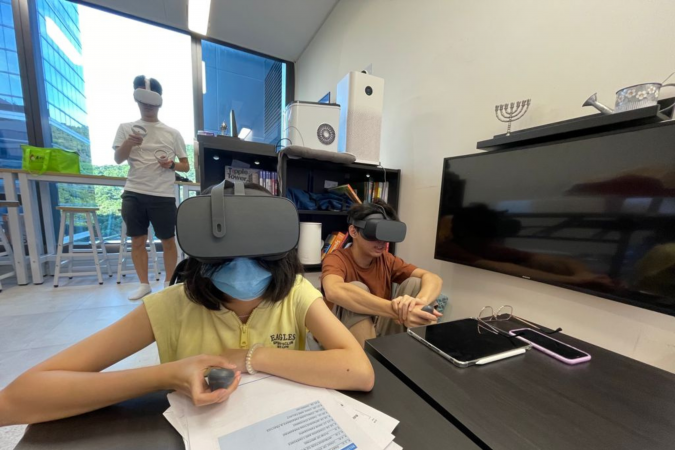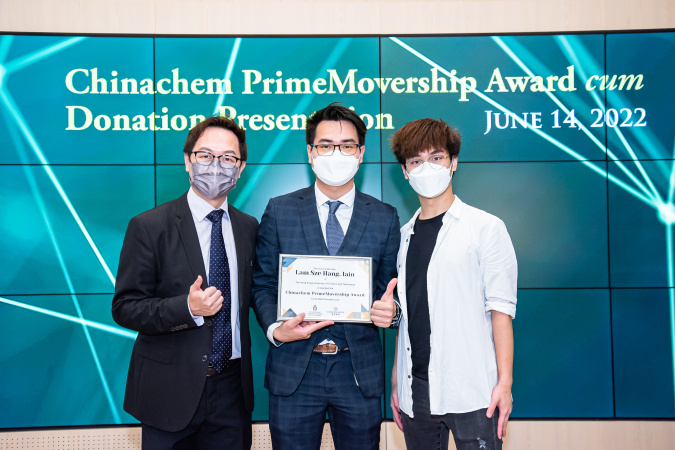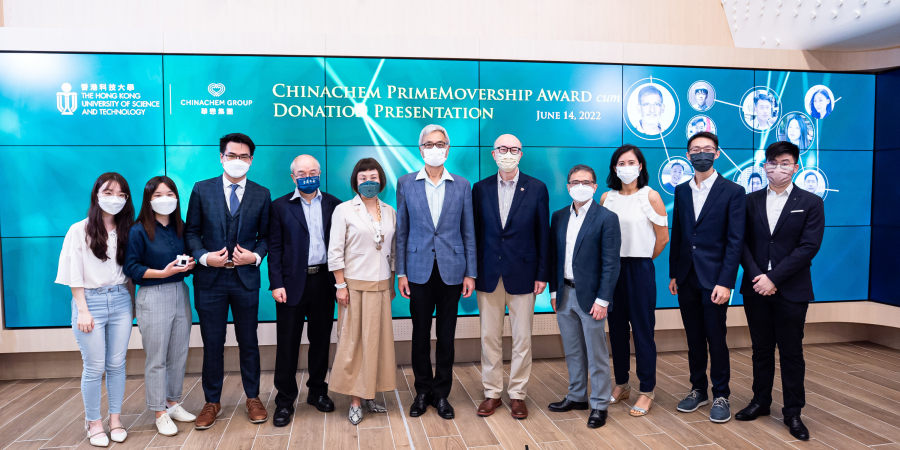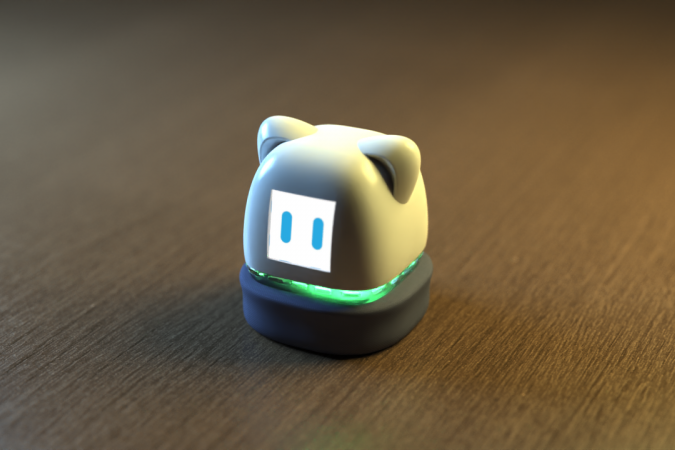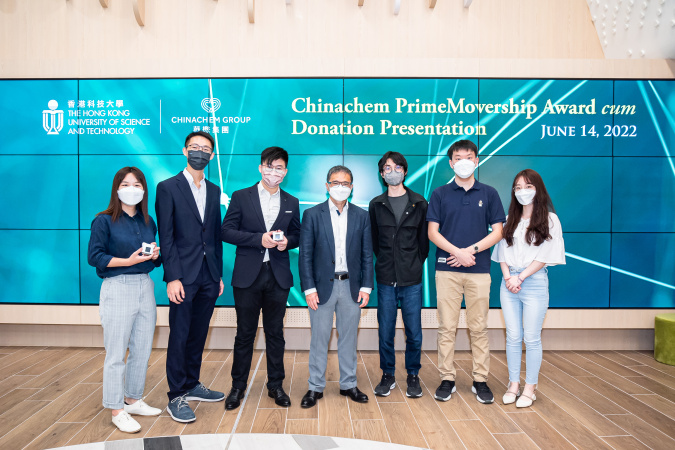Chinachem PrimeMovership Scholarships Recognize Students with High Achievement in Innovative Technologies Design
Behind every great innovation lies a design sensibility, something that might be imperceptible to users but is in fact a vital element of design thinking that yields human-centered innovative solutions. HKUST’s Division of Integrative Systems and Design (ISD) has a lofty goal of nurturing a new generation of innovators via project-based learning, enabling them to chart an empathetic course to meet people’s needs through the use of technology.
Innovation driven by struggles
Founded by ISD student Iain LAM, Sallux Education is an education center that uses technology to help academically challenged students in primary and secondary schools. It is an endeavor born out of Iain's own struggles with dyslexia and attention deficit hyperactivity disorder (ADHD) as a child.
“The learning difficulties couldn’t have been worse. In the traditional Hong Kong local curriculum, every student was required to sit in a very conventional classroom context and then do a lot of homework every day,” says Iain, who is the CEO and is now in his final year of MSc in Technology Leadership and Entrepreneurship, which requires every student to launch a start-up as one of the entrepreneurship components.
Like many young students with dyslexia, Iain had particular problems memorizing the English alphabet, and he describes the environment in the classroom as “toxic” despite him being a hard-working student. “My teacher and my classmates did not understand what difficulties I was going through.”
He also faced bullying because of his problems, but rather than being embittered, it left him with a strong capacity for empathy and a determination to help others similarly disadvantaged. “I wanted to do something at least to help society and to get the teaching community to know about the struggle and the feelings of SEN students.”
Gamified learning
Iain’s innovative approach has managed to improve the learning experience of struggling students by gamifying the process, particularly with the use of virtual reality (VR) and modified reality (MR).
Putting on their headsets, the SEN students are fully engaged in an immersive virtual learning environment, enabling them to focus on lectures for at least 20 minutes and to complete tasks in a non-distracting environment.
“We often see SEN students bad at school but good at gaming. It’s not that their abilities are low but just the traditional way of learning doesn’t feed them with enough motivation, which is what our ‘play to learn’ approach and VR learning environment offer,” says Iain.
To date, 75 SEN students have taken part in the interactive tutorial sessions since the platform was launched. “We’re not only helping them to cope with schoolwork and exams, but also to build their self-esteem and find their own character.” This, says Iain, is one of the project’s greatest achievements. He has also brought three of his former students on board in the company, with one as Chief Operating Officer and engineer.
This innovative solution for education has earned Iain a Chinachem PrimeMovership scholarship, which aims to support ISD students with high achievements in innovative technologies design and who have entrepreneurial potential. This year, the scholarship was awarded to 14 students.
While the pandemic presented a number of challenges, not least economic difficulties, Iain says the scholarship has come in a timely manner.
“The pandemic directly impacted us financially so the scholarship came at a right time and ensured all my five staff got paid,” says Iain, adding that the recognition helps the company develop further. He has plans for potentially expanding the platform to the Mainland.
Digital pet guarding emotional health
Another awarded project is the Year 2 undergraduate team’s IRIS project, which has harnessed the concept of a virtual pet to provide wellness support to students experiencing isolation or loneliness. The palm-sized digital pet provides not only interaction and companionship to users with sound and visual feedback, but also emotional assessment to raise users’ awareness of their mental health.
“Users’ heart rate variability (HRV) is recorded via the digital pet, and we could use algorithmic methods to obtain their stress level. By recording users’ daily emotion, we could obtain a journal of users’ emotions for their own monitoring and even send alerts to the users prompting them to seek help if necessary,” says software developer Kelly LAI.
The team also aims to offer a safe outlet for users to express their emotions with an anonymous voice message function, while being connected to IRIS’s own online platform.
“Users can vent their stress to the digital pet using the voice message function, and they can connect with other users in the community via the online platform we created, which would act as a safe space for students to talk about how they feel and connect with others without fear of judgement,” says Renault LUK, one of the team members responsible for the coding work.
The team has used different technologies, such as 3D printing, haptics, and machine learning, to produce the prototypes and the next step for the project is to enter production through crowdfunding. Should they manage to scale up sufficiently, they hope to be able to reach a retail price of HK$600-800.
Educational outreach
All the scholarship recipients are testimony to ISD’s early success, with students equipped with the wherewithal to better integrate design into their projects, thereby producing more human-centered and impactful products.
“When we first started in 2017, a lot of effort was put into educational outreach – what it means to marry engineering and design, why design thinking and systems thinking are crucial at this level of undergraduate education, and how ISD’s student-centric curriculum, along with industry collaborative support, provides the rich and inspiring bedrock for our students to grow,” says Winnie LEUNG, Assistant Professor of Engineering Education at ISD.
“Our ultimate goal is to nurture a new generation of innovators who can work across multiple disciplines and create disruptive innovations to solve the world’s great challenges.”
(This news was originally published by the HKUST Public Affairs Office here.)
